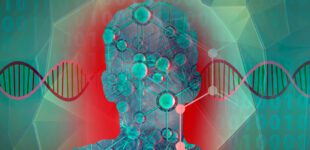May 21, 2020
The reliable and efficient generation, transmission and distribution of electricity is a critical task that businesses, hospitals and homes rely upon for safe and stable power. As COVID-19 swept across the globe, energy engineers quickly stepped in with their crisis response to ensure that customers stayed plugged in, turned on and operating at full capacity.
This is why IEEE Senior Member Aleksi Paaso, a member of the IEEE Power & Energy Society, collaborated with system operators and utility providers across the world to understand and share how energy companies are keeping our electricity on while responding to the COVID-19 emergency.
Paaso and other IEEE Power & Energy Society (PES) leaders recently published a free white paper, Sharing Knowledge on Electrical Energy Industry’s First Response to COVID-19 on the energy industry’s response to the current pandemic. We connected with him to learn more about how the engineers, energy workers and industry are changing their normal day-to-day work procedures in this new time of social distancing.
IEEE: What types of technology are being used to keep our power grid running while social distancing is recommended?
ALEKSI PAASO: From the operational side and from the technology side, utilities and system operators have been able to respond to the pandemic and keep the infrastructure running. There are measures that are being taken and technology that is being demonstrated. We have seen a number of utilities and system operators looking at things like proximity sensors or mobile phone applications to do some virus tracing in order to help with tracking where there might have been an infection.
Overall, the industry has marshalled a very strong response to the pandemic, largely because crisis preparedness is very much a part of our ongoing work. The power industry prepares for different types of emergencies and companies have emergency preparedness groups that are focused on looking at the different risks and mitigating those risks.
IEEE: Are there engineers and energy employees who are self-isolating from their families to continue their work running the power grid?
AP: We’ve seen that some companies have implemented something called “sequestering” for some of their control centers and critical facilities. This means that some people would be on for a certain duration of time, such as 12-14-day shifts. They would be living on-site at the control centers, or in proximity to the control centers, and be basically isolated from the rest of the world at that time. There are general plans in place, but it hasn’t been widely deployed so far.
Some utilities have reduced the risk of virus transmission by implementing 8-12-hour shifts, implementing more cleaning practices and limiting people in the control center. For the rest of engineering teams, practically all utilities have implemented work from home, like other industries.
IEEE: The white paper also notes that drones are being implemented for routine surveillance in the field to help with social distancing.
AP: Yes. Drone surveillance really enhances our inspection capabilities. We have seen that a number of utilities have implemented some proactive inspections to ensure critical facilities related to COVID-19, such as hospitals, have additional rounds of inspections to their systems. Drones support that very well.
IEEE: Is there increased concern about power grid cyberattacks during this time? What are engineers doing to protect the power grids?
AP: The white paper reported that there is an increase in phishing to the utility system and utility employees across the world. The IT departments and the engineers in those roles have been really critical in terms of responding to those threats and mitigating potential impacts. The system and supporting IT systems work together to mitigate those risks .
IEEE: How are energy teams increasing power supply reliability and resilience in the face of storms and natural disasters during COVID-19?
AP: Accelerating inspections to power systems that feed to the most critical sites is first. We look at the supplies to hospitals and make sure they are good and in a sufficient condition. And we are very focused on helping maintain the safety of our workforce, particularly front line workers.
We don’t want to be in a situation where multiple emergencies are happening at the same time. We heard that power companies are increasing their staffing levels so if there is a storm, they are prepared to quickly restore power to customers who might have been impacted. For the past several years, we have moved from traditional means of reliability to looking at the system design from a resiliency angle, and we have achieved record levels of reliability.
IEEE: What inspired you and PES members to write the white paper?
AP: The collaboration that takes place within the power industry is equaled by few other industries. Utility system operators do all kinds of note sharing in terms of sharing best practices. At the beginning of 2020, there were no best practices that we could pull off the shelf for COVID-19, but there are now emerging practices that the utilities and system operators have developed. It is really key for us as an industry and for PES as a leader to document and disseminate those practices so that they can be implemented widely. This will increase preparedness of individual companies and the industry at large.
IEEE: In the white paper, you wrote about different countries and towns implementing different measures. Did you find that one country stood out in terms of preparedness and safety?
AP: We surveyed between 15-20 different utilities and system operators. We haven’t found that responses qualify yet as best practices, but we have seen interesting approaches like the sequestering, distributing of masks and other personal protective equipment. Some response efforts are further along than others, of course, based on when they began their response to COVID-19.
I think what’s especially interesting about the PES collaboration is that we got insights from Asia, Australia, Europe, North and South America. We had a very global team that we were able to pull together and got to see how different countries are mitigating these risks.





 Meaningful Momentum or Running in Place?
Meaningful Momentum or Running in Place? AI Through Our Ages
AI Through Our Ages Liquid Infrastructure: Our Planet's Most Precious Resource
Liquid Infrastructure: Our Planet's Most Precious Resource The Impact of Technology in 2025
The Impact of Technology in 2025 Quantum and AI: Safeguards or Threats to Cybersecurity?
Quantum and AI: Safeguards or Threats to Cybersecurity? Why AI Can't Live Without Us
Why AI Can't Live Without Us Bits, Bytes, Buildings and Bridges: Digital-Driven Infrastructure
Bits, Bytes, Buildings and Bridges: Digital-Driven Infrastructure Impact of Technology in 2024
Impact of Technology in 2024 Emerging AI Cybersecurity Challenges and Solutions
Emerging AI Cybersecurity Challenges and Solutions The Skies are Unlimited
The Skies are Unlimited Smart Cities 2030: How Tech is Reshaping Urbanscapes
Smart Cities 2030: How Tech is Reshaping Urbanscapes Impact of Technology 2023
Impact of Technology 2023 Cybersecurity for Life-Changing Innovations
Cybersecurity for Life-Changing Innovations Smarter Wearables Healthier Life
Smarter Wearables Healthier Life Infrastructure In Motion
Infrastructure In Motion The Impact of Tech in 2022 and Beyond
The Impact of Tech in 2022 and Beyond Cybersecurity, Technology and Protecting Our World
Cybersecurity, Technology and Protecting Our World How Technology Helps us Understand Our Health and Wellness
How Technology Helps us Understand Our Health and Wellness The Resilience of Humanity
The Resilience of Humanity Harnessing and Sustaining our Natural Resources
Harnessing and Sustaining our Natural Resources Creating Healthy Spaces Through Technology
Creating Healthy Spaces Through Technology Exceptional Infrastructure Challenges, Technology and Humanity
Exceptional Infrastructure Challenges, Technology and Humanity The Global Impact of IEEE's 802 Standards
The Global Impact of IEEE's 802 Standards Scenes of our Cyber Lives: The Security Threats and Technology Solutions Protecting Us
Scenes of our Cyber Lives: The Security Threats and Technology Solutions Protecting Us How Millennial Parents are Embracing Health and Wellness Technologies for Their Generation Alpha Kids
How Millennial Parents are Embracing Health and Wellness Technologies for Their Generation Alpha Kids Space Exploration, Technology and Our Lives
Space Exploration, Technology and Our Lives Global Innovation and the Environment
Global Innovation and the Environment How Technology, Privacy and Security are Changing Each Other (And Us)
How Technology, Privacy and Security are Changing Each Other (And Us) Find us in booth 31506, LVCC South Hall 3 and experience the Technology Moon Walk
Find us in booth 31506, LVCC South Hall 3 and experience the Technology Moon Walk Virtual and Mixed Reality
Virtual and Mixed Reality How Robots are Improving our Health
How Robots are Improving our Health IEEE Experts and the Robots They are Teaching
IEEE Experts and the Robots They are Teaching See how millennial parents around the world see AI impacting the lives of their tech-infused offspring
See how millennial parents around the world see AI impacting the lives of their tech-infused offspring Take the journey from farm to table and learn how IoT will help us reach the rising demand for food production
Take the journey from farm to table and learn how IoT will help us reach the rising demand for food production Watch technical experts discuss the latest cyber threats
Watch technical experts discuss the latest cyber threats Explore how researchers, teachers, explorers, healthcare and medical professionals use immersive technologies
Explore how researchers, teachers, explorers, healthcare and medical professionals use immersive technologies Follow the timeline to see how Generation AI will be impacted by technology
Follow the timeline to see how Generation AI will be impacted by technology Learn how your IoT data can be used by experiencing a day in a connected life
Learn how your IoT data can be used by experiencing a day in a connected life Listen to technical experts discuss the biggest security threats today
Listen to technical experts discuss the biggest security threats today See how tech has influenced and evolved with the Games
See how tech has influenced and evolved with the Games Enter our virtual home to explore the IoT (Internet of Things) technologies
Enter our virtual home to explore the IoT (Internet of Things) technologies Explore an interactive map showcasing exciting innovations in robotics
Explore an interactive map showcasing exciting innovations in robotics Interactively explore A.I. in recent Hollywood movies
Interactively explore A.I. in recent Hollywood movies Get immersed in technologies that will improve patients' lives
Get immersed in technologies that will improve patients' lives